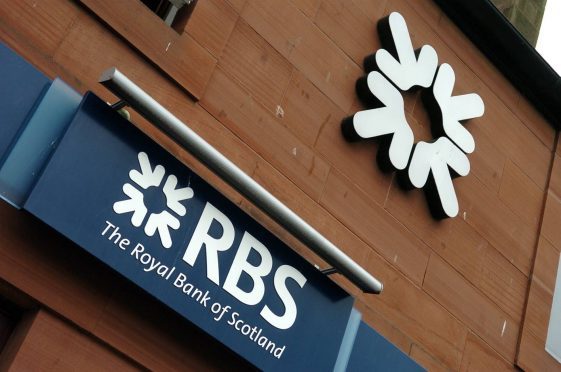Royal Bank of Scotland (RBS) will start the ring-fencing of its retail banking operations at the end of this month.
Edinburgh-based RBS will become the latest UK lender to formally transfer its retail customers to a separate unit as part of new rules meant to protect consumer cash from investment banking risks.
The new ring-fencing regulations – part of key reforms introduced in the wake of the 2008 financial crisis – apply only to banks holding more than £25billion in core deposits from individuals and small to medium-sized businesses.
RBS is separating the business of retail customers for banking brands including NatWest and Ulster Bank.
The changes will also affect some customers of Coutts, and other brands like Lombard, Drummonds, RBS Invoice Finance, Adam & Company and Holt’s Military Banking.
A spokesman for RBS, which is still 73% owned by the taxpayer, said personal customers should not expect disruption to services as the new model is rolled out over the weekend leading up to April 30.
The non ring-fenced bank will be made up of clients from NatWest Markets, NatWest International, RBS International and Isle of Man Bank.
Barclays recently became the first UK bank to complete the process ahead of the January 2019 deadline.
Its transfer of customers took place over the Easter weekend, populating what is now called Barclays Bank UK – a unit which is separate from Barclays Bank, which offers products and services for the group’s larger corporate, wholesale and international banking clients.
Financial meltdown in the wake of the bankruptcy of US investment bank Lehman Brothers in September 2008 brought RBS and many other big names in the industry to their knees, forcing collapses and nationalisations.
An Independent Commission on Banking vision for the sector included ring-fencing banks’ high-street divisions to protect them from riskier investment arms.
Rolling out the process is a major change to the structure of UK banking, with an estimated 75% of all customer deposits affected by the reorganisations taking place within lenders.
Nearly 1million people and businesses are seeing changes to their bank account details as they are placed on the right side of the fence.
Meanwhile, RBS has launched a scheme that will see staff provide lessons on how to thwart scammers to a million people across the UK by 2020.
The Friends Against Scams training can be done at branches or online, and is aimed at helping customers to understand how to spot a scam and arming them with information to help prevent relatives, neighbours, friends and themselves becoming victims.
RBS chief executive Ross McEwan said: “Keeping our customers safe and secure is a bank-wide priority.
“Having trained 22,000 colleagues across the bank, we are already seeing a real impact which has helped our customers avoid becoming victims.
“However, more still needs to be done and we are proud to commit to training 1million customers and non-customers across the UK by 2020.”










